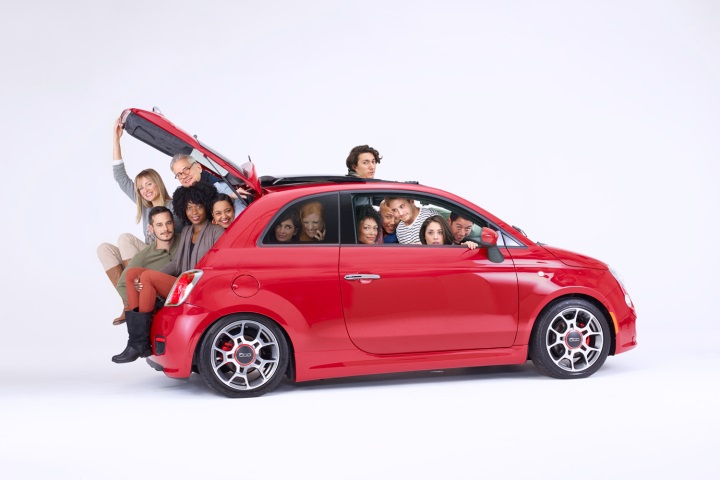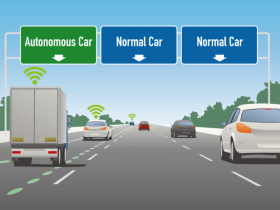By Joshua Paundraa, Laurens Rookb, Jan van Dalena, Wolfgang Kettera, c,
Car sharing services gain momentum as a potential alternative to various modes of transportation, including privately owned cars. This trend goes hand in hand with a renewed interest in the sharing economy, which has as essential premise that product ownership is of minor relevance. Using an online experiment, this study investigates if individual differences in psychological ownership influence the effects of well-known instrumental car attributes (price, parking convenience, and car type) on people’s intentions to select a shared car. Results confirmed that instrumental attributes generally impact preferences for car sharing services, and that a low psychological ownership may lead to a higher preference for a shared car under specific circumstances. This suggests that not only instrumental car attributes, but also psychological disposition, specifically psychological ownership, of potential customers need to be taken into consideration when developing measures to stimulate car sharing services in society.
1.1. The sharing economy and car sharing service
The sharing economy is an economic arrangement between actors who share underutilized assets – i.e., products that people own but do not frequently use – in the marketplace (Bardhi and Eckhardt, 2012; Cohen and Kietzmann, 2014 ; Sundararajan, 2016). Information technology has enabled the widespread adoption of sharing economy principles (Martin, 2016) by allowing individuals to communicate, coordinate and build trust with others in a large public arena (Albinsson & Perera, 2012). As a novel and sustainable alternative to traditional consumption models, the sharing economy, like related concepts such as collaborative consumption (Botsman & Rogers, 2010), and market-mediated access-based consumption (Bardhi & Eckhardt, 2012), has been suggested as an appropriate response to the environmental challenges posed by overconsumption and overexploitation of resources (Hamari, Sjöklint, & Ukkonen, 2016). The adoption of sharing economy principles enables people to “leverage [their] lifestyles beyond individual possibilities” (Belk, 2007, p. 134), which in the long term is assumed to result in improved societal welfare (Fraiberger & Sundararajan, 2015).
The recent interest in the sharing economy is visible in domains ranging from tourism (e.g. Airbnb) to consumer goods (e.g. Pley), but also in transportation through the introduction of car sharing services (e.g. Car2Go, Zipcar, and Getaround; cf. Belk, 2014 ; Bardhi and Eckhardt, 2012). The earliest car sharing program in history was the cooperative Sefage, introduced in Zurich, Switzerland in 1948 ( Shaheen, Sperling, & Wagner, 1999). Other well-known European car sharing initiatives were introduced in the early 1970s, such as Witkar in Amsterdam, the Netherlands, and Procotip in Montpellier, France ( Millard-Ball, Murray, Ter Schure, Fox, & Burkhardt, 2005). Yet, only recently, car sharing services have really become popular, with estimated car sharing memberships of 12 million in 2020– a significant increase from 2.3 million that was reported in 2013 (Cohen & Kietzmann, 2014).
Car sharing services hold great promise for sustainability and individual mobility alike. Studies estimate that a single shared car can replace between nine and thirteen private cars (Martin et al., 2010), given that a private car is primarily used for a mere 5% of the time (Ballús-Armet, Shaheen, Clonts, & Weinzimmer, 2014). Reducing – or even to some extent replacing – private car ownership would contribute to the reduction of air pollution, traffic congestion, and the increase of parking spots availability (Efthymiou, Antoniou, & Waddell, 2013). Car sharing services allow for rationalization of unnecessary trips, which contributes towards pollution reduction by as much as 56% (Shaheen & Cohen, 2013). Moreover, car sharing services can complement public transportation, particularly in providing mobility services in those trips which are typically only suited for car driving (De Lorimier & El-Geneidy, 2013), reducing the need to have private cars and increasing the access to mobility to many.
1.2. Attributes of vehicle driving
Prior research has identified three major factors influencing people’s preferences for vehicle use: price, parking convenience, and car type. For starters, transportation research reports that price is an important attribute for car users. Regardless of income level, people generally consider the cost for their choice of taking a car (Gardner & Abraham, 2007). The influence of price on transportation preferences equally applies to car sharing services (cf. Lamberton & Rose, 2012). Duncan (2011) indicates that it is generally cheaper to choose a shared car than to drive a private car. The total costs of driving a private car are high, due to the fixed cost of car purchase and variable costs of fuel, parking and maintenance costs. Car sharing services, in contrast, only charge membership and usage cost for an individual trip, and are in fact so cheap that they are financially within reach of many people who cannot afford a car, such as students and low-income individuals (De Luca & Di Pace, 2015). Most research, however, has focused on the characteristics of car sharing services without considering the possibility of making a trip with a privately owned car. As an exception, De Luca and Di Pace (2015) found that an increase in the price of a car sharing service reduces the willingness to switch from private car to a car sharing service. Price therefore plays a major role in the decision whether someone will select a car sharing service rather than a private car for an intended trip.
It is also well-documented that people are primarily attracted to modes of transportation that are not too far away from them (Brown et al., 2016). In a car driving context, accessibility is typically translated into parking convenience: the more difficult it is to find a parking place the less likely people will take a car for a trip (De Lorimier & El-Geneidy, 2013). Applied to car sharing services, Litman (2000) suggested that to be a viable alternative to a private car, car sharing services must be within walking distance from a user’s location. Some anecdotal evidence exists that car sharing services are more attractive to a potential client, if parking places are included in the service (Kaspi, Raviv, & Tzur, 2014); people do not use a shared car service when the parking location of the shared car is further away (De Luca & Di Pace, 2015). It thus makes sense to predict that parking convenience will play a major role in the decision whether someone will select a car sharing service for an intended trip.
Car manufacturers, such as BMW and Tesla, invest in electric mobility ( Hidrue, Parsons, Kempton, & Gardner, 2011) and several governments currently incentivize the use of EVs in the hope to overcome overdependence on fossil fuel (Cartenì, Cascetta, & de Luca, 2016). In daily practice, however, people often express concerns against electric vehicles – among others regarding the less sustainable nature of their manufacturing process and electricity sources (cf., Hawkins, Singh, Majeau-Bettez, & Strømman, 2013). Contrary to such concerns, some scholars are now exploring the viability and environmental benefits of electric vehicles as an alternative to traditional internal combustion engine (ICE) cars in car sharing systems (Kim, Ko, & Park, 2015). The evidence on the contribution of electric car type on the willingness to select a car sharing service is mixed. A study by Cartenì et al. (2016) suggests that EV fleets in car sharing services have a positive influence on people’s decision to join the service. Given that some people are attracted to services that signal their ‘green’ identity (Griskevicius et al., 2010), we predict that similar considerations apply to car sharing, such that offering an EV as an alternative to the traditional ICE car type will play an important role in influencing people’s intentions to select a shared car.
Please, read the full article at: http://www.sciencedirect.com/science/article/pii/S0272494417300920




















